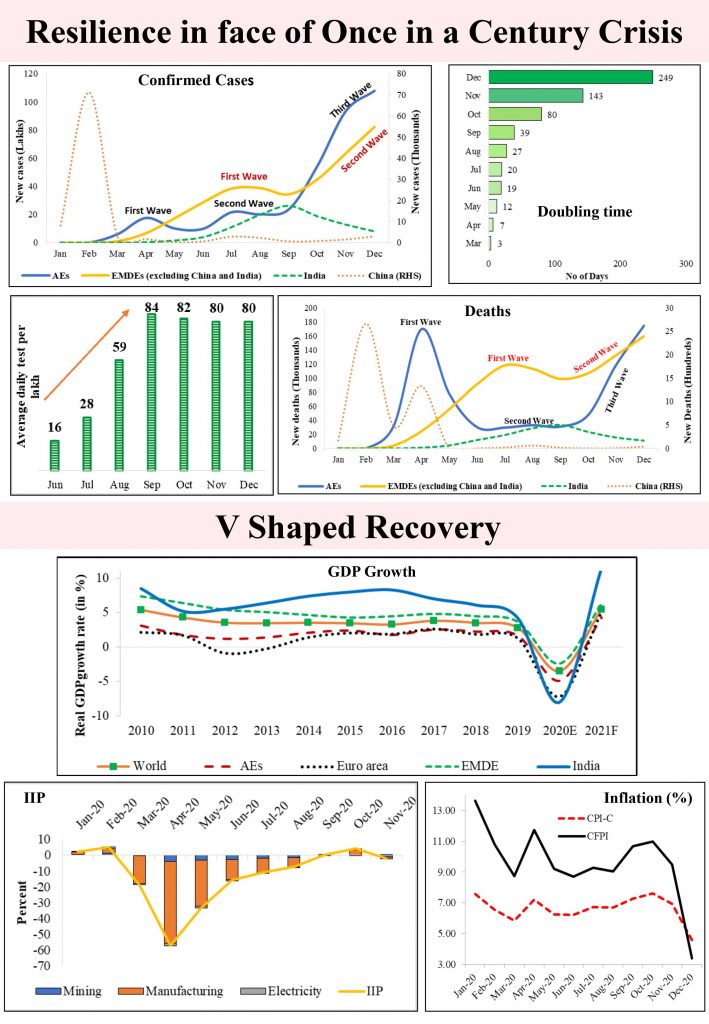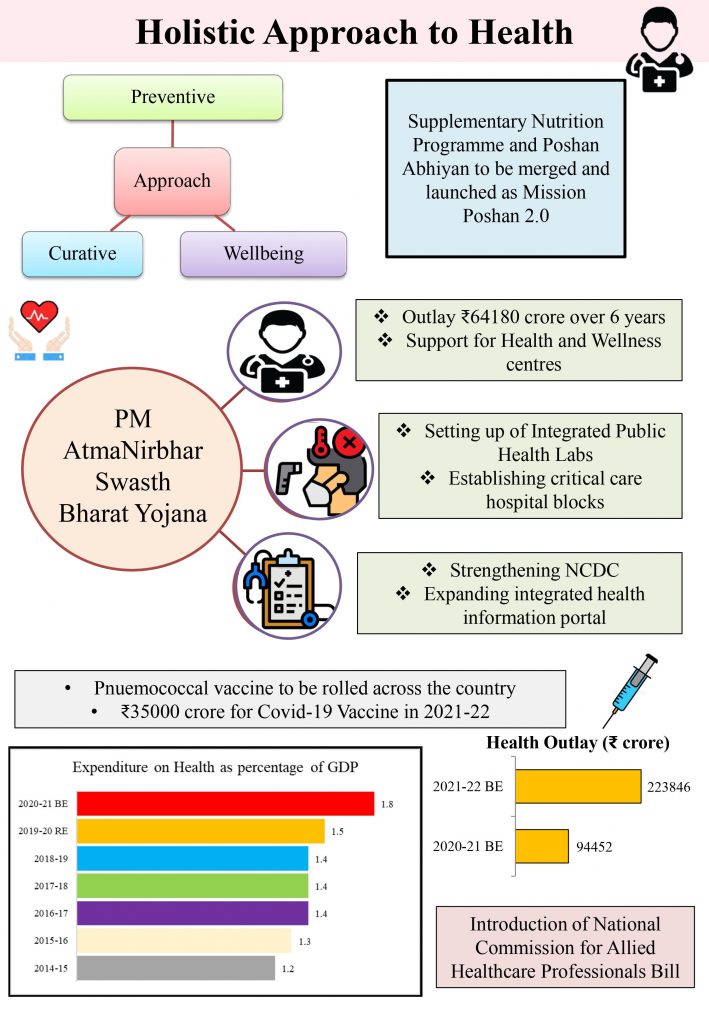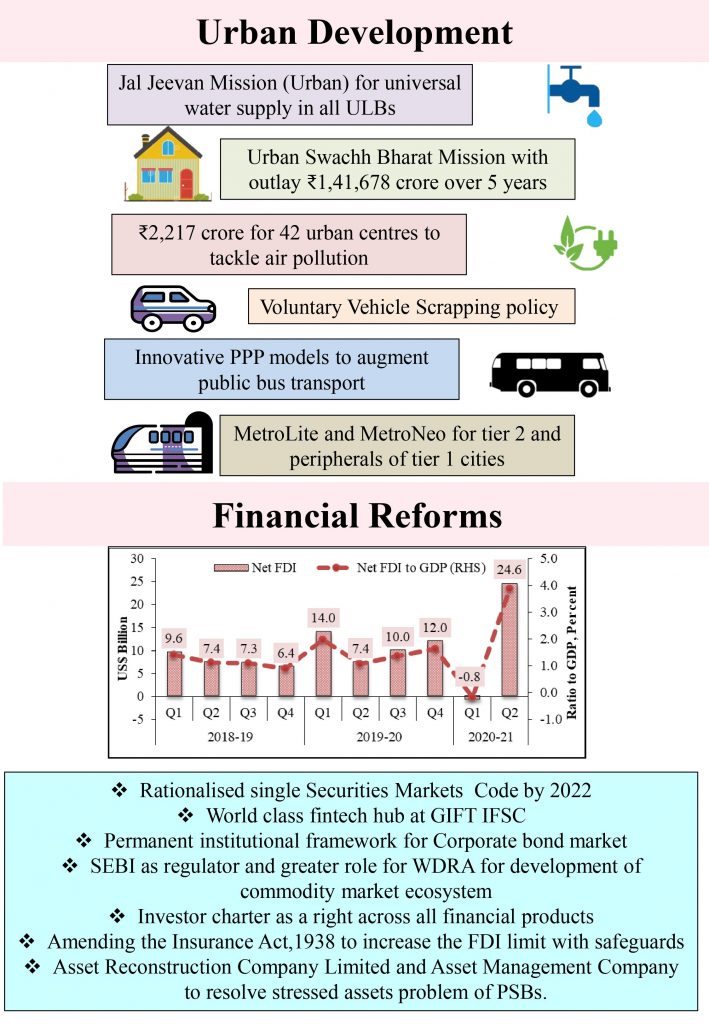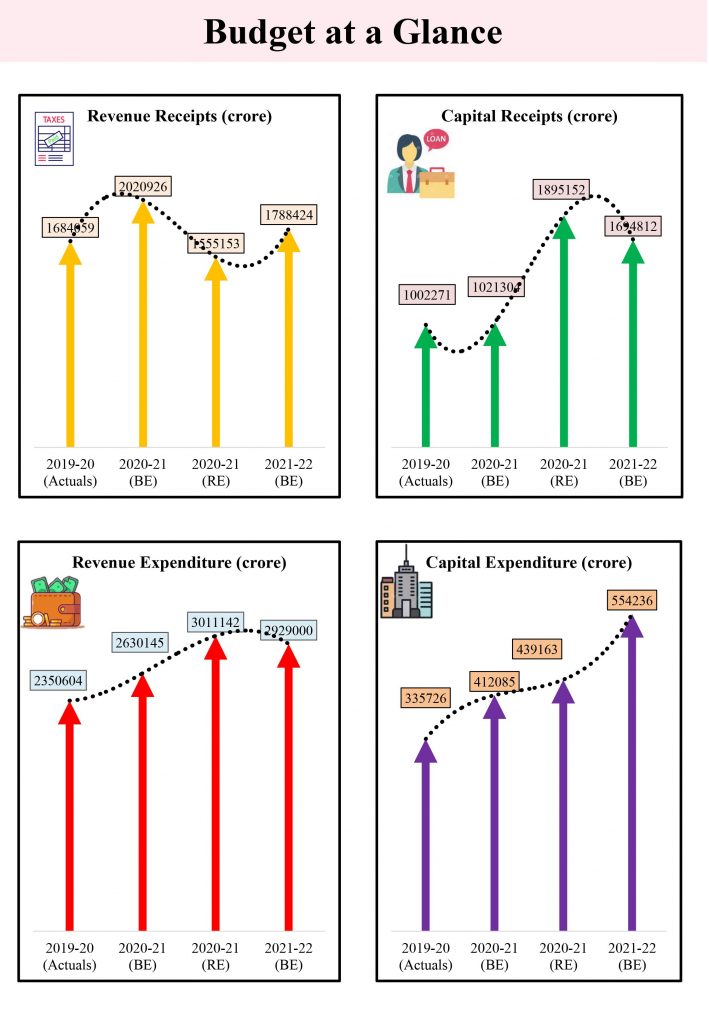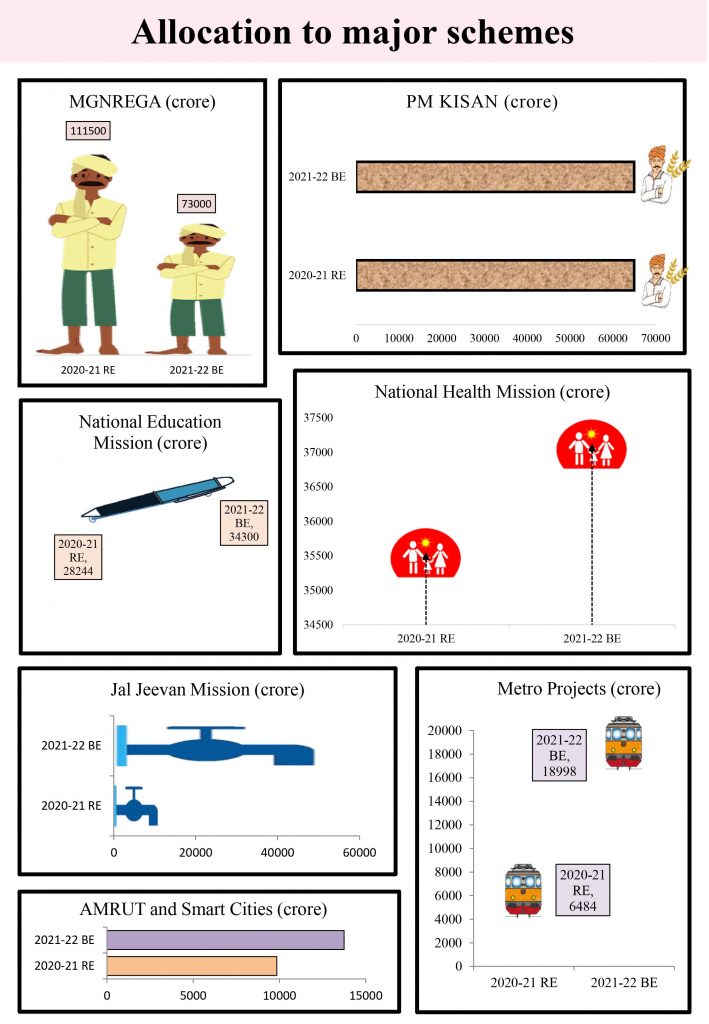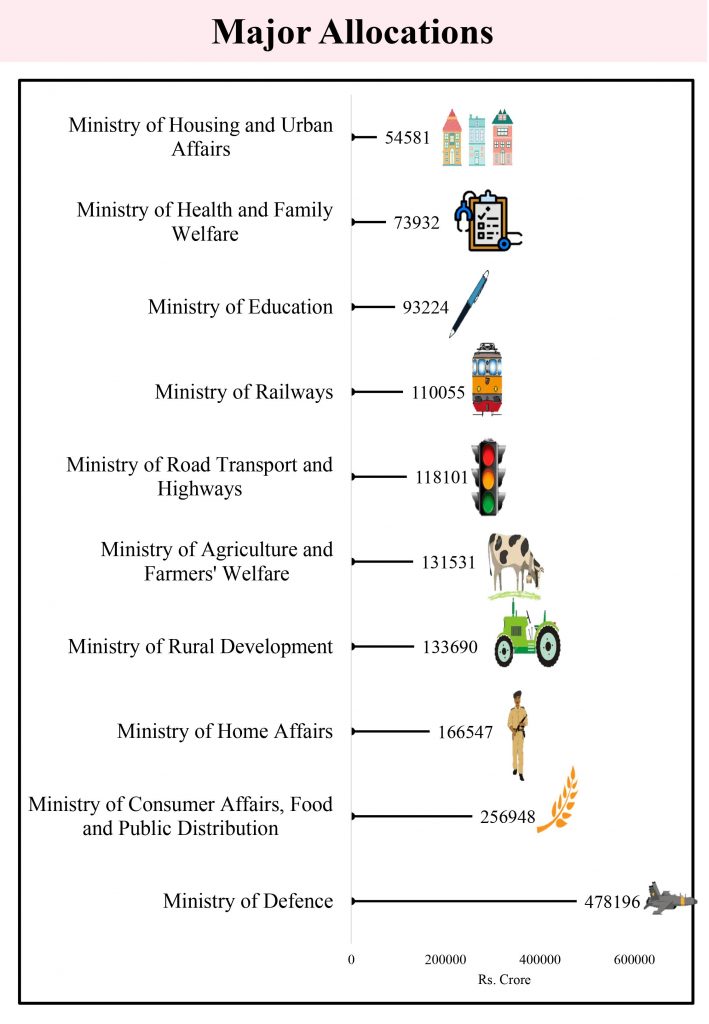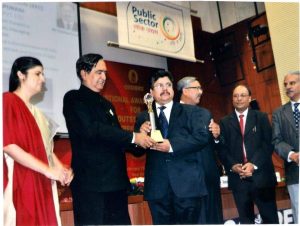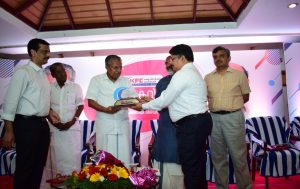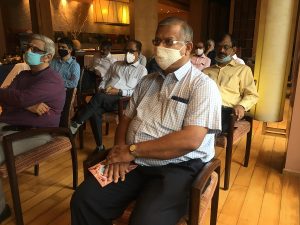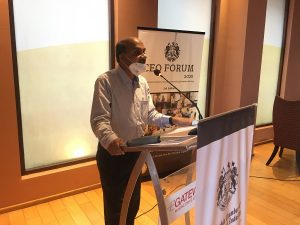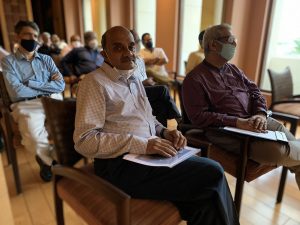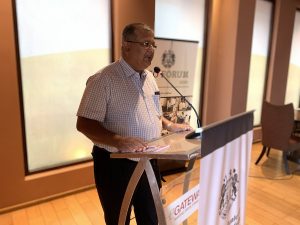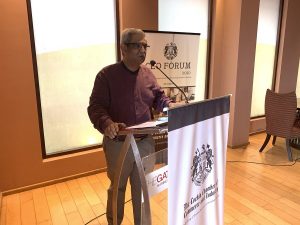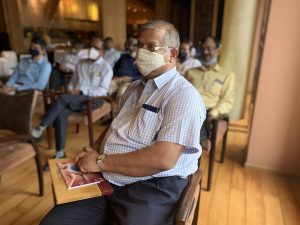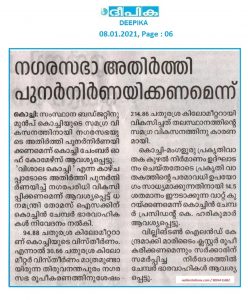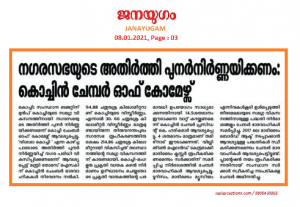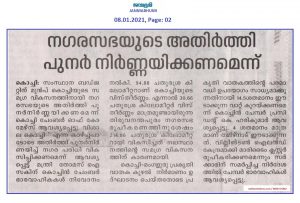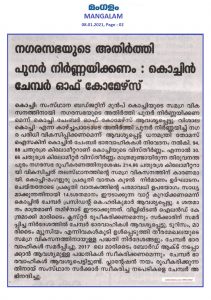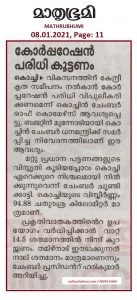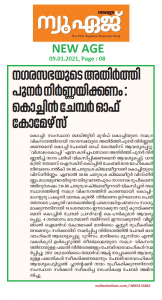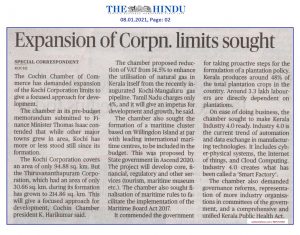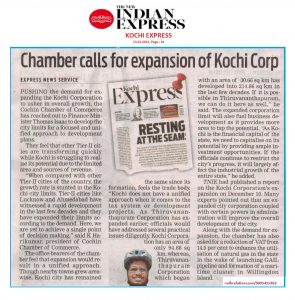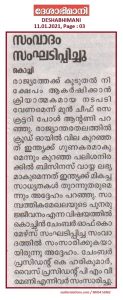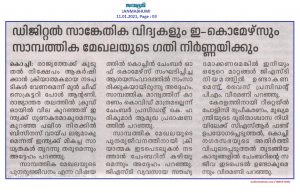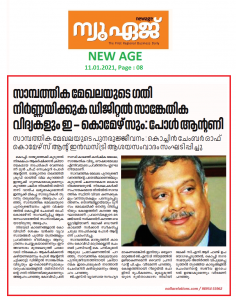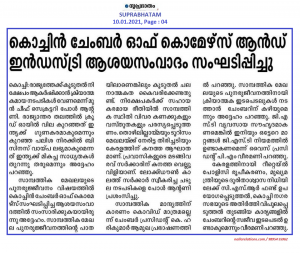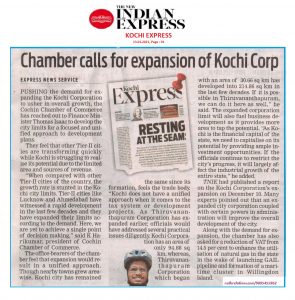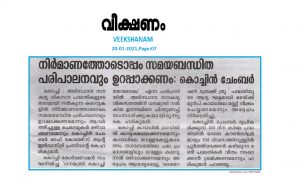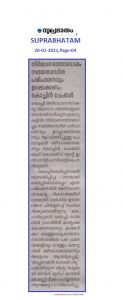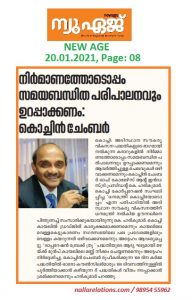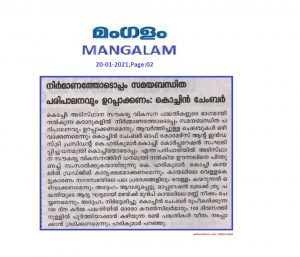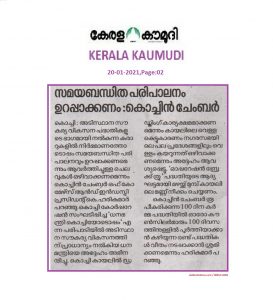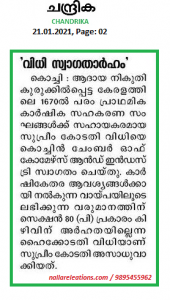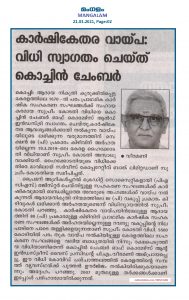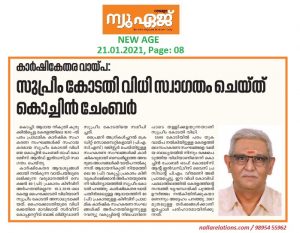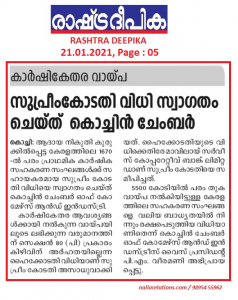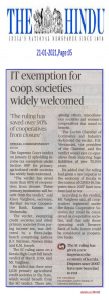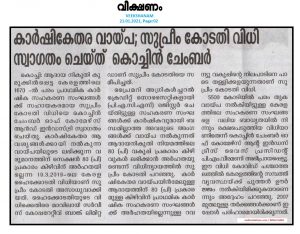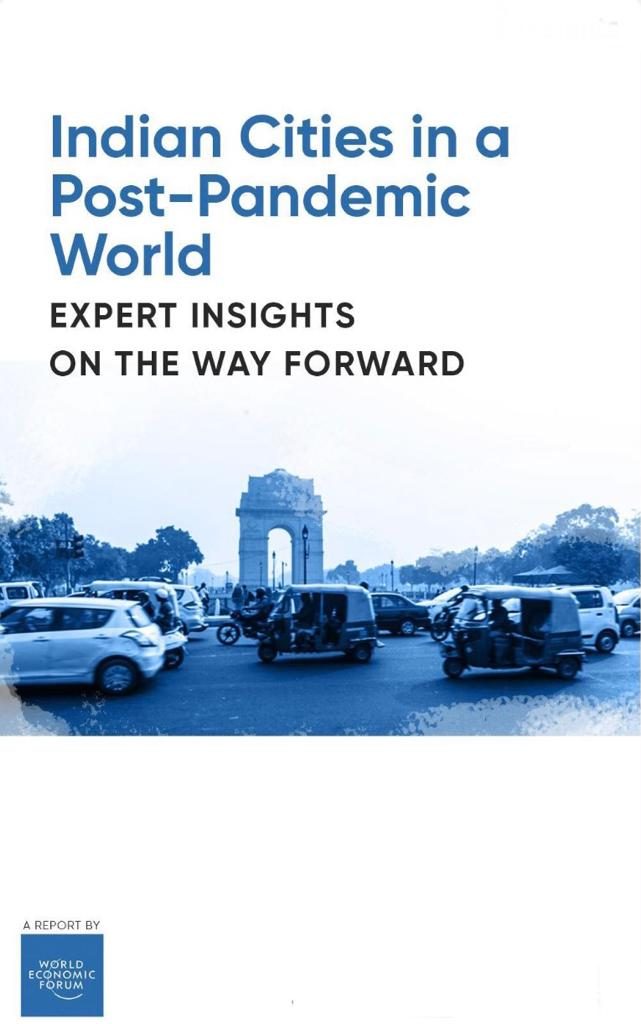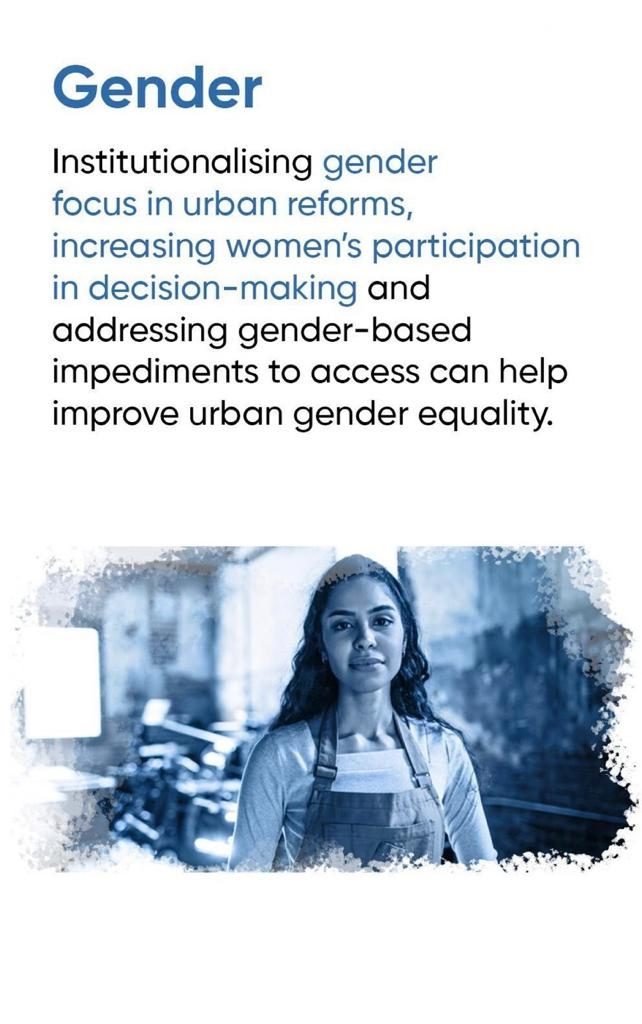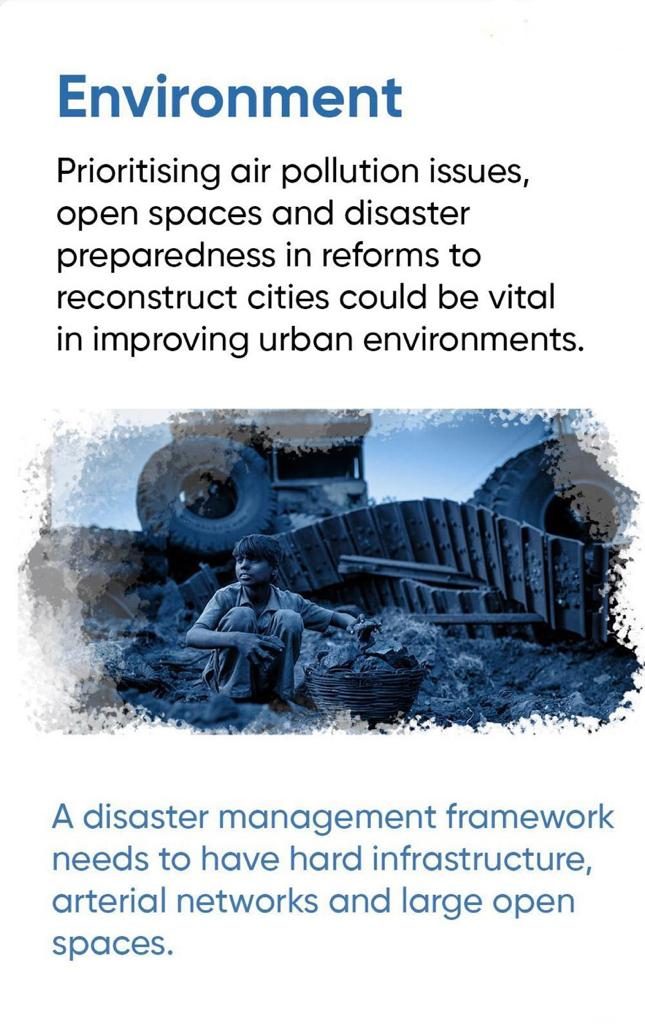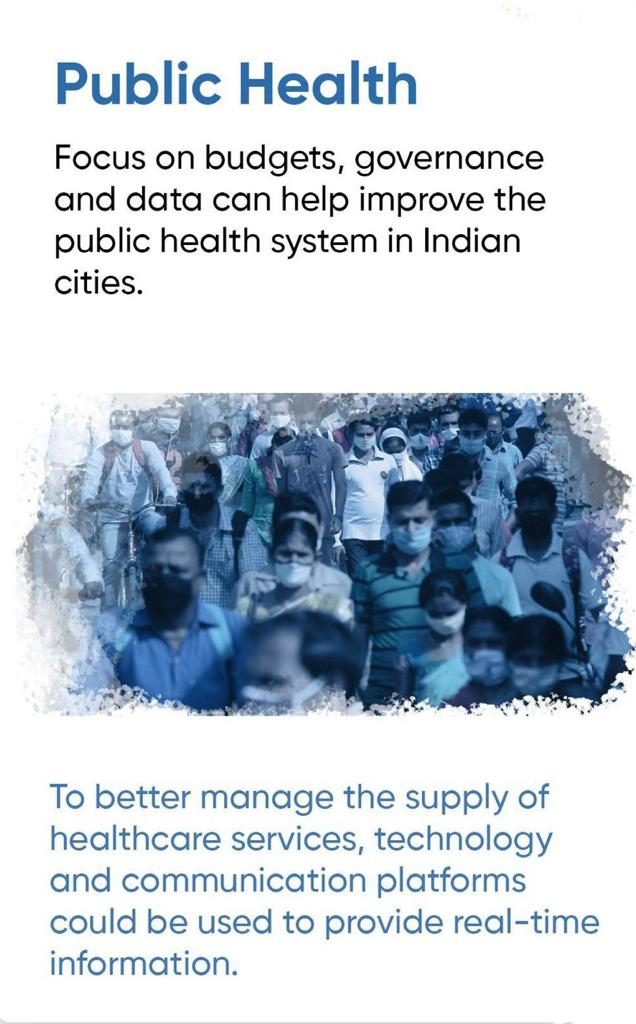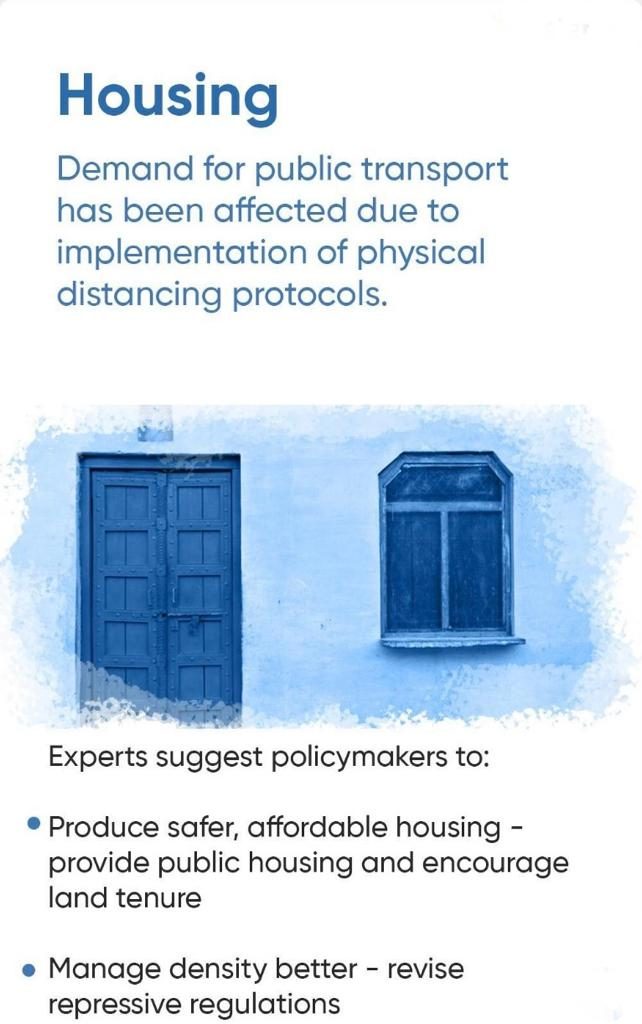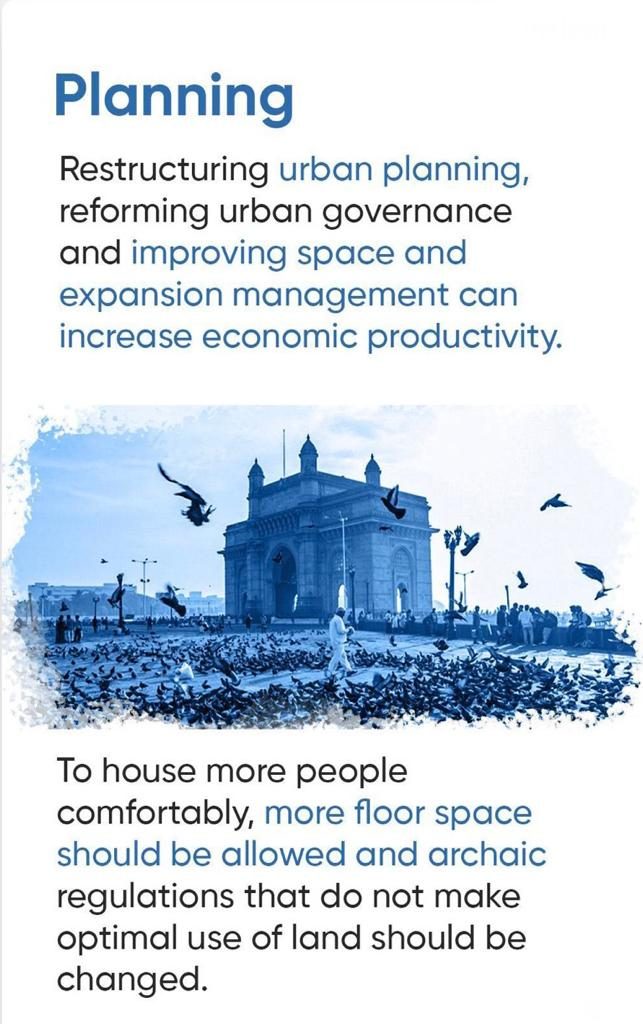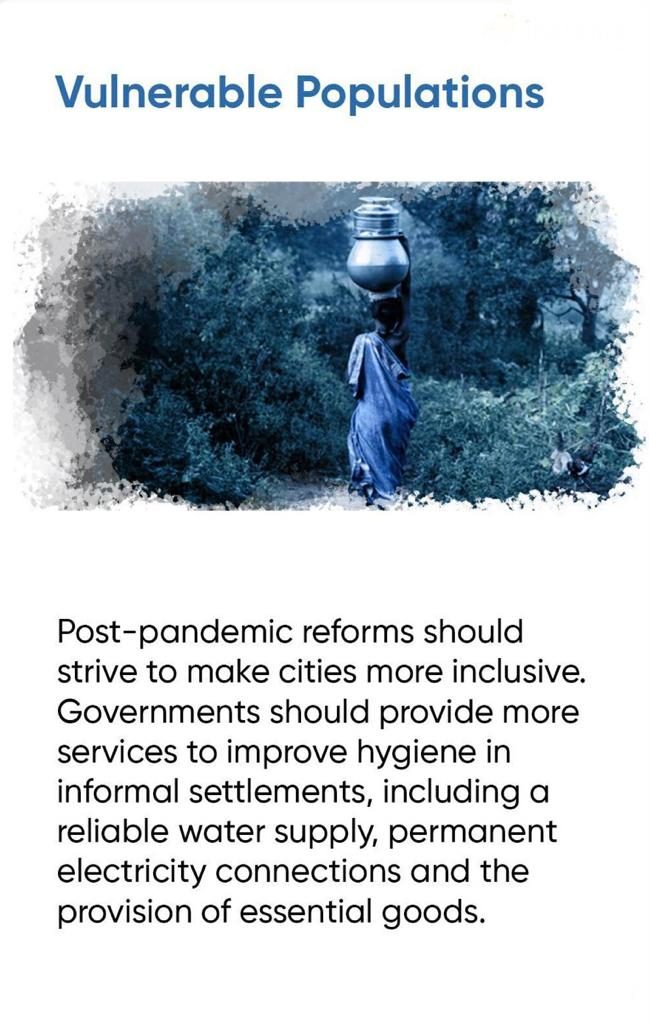
President's Note
Dear Friends,
Your Chamber had been very active across spheres since last time I addressed you.
The Chamber presented its views to the Hon’ble Chief Minister on 30th December to improve the business environment in Kerala. The Chamber advocated for a retail policy making suitable amendments in the Kerala Shops & Establishments Act, to drive the retail sector which was badly affected by flood and COVID, introduce entrepreneurship curriculum in schools to make the youth job creators than seekers, a Global tourism competitive index as tourism is a revenue earner for the state, the necessity to adopt world economic forums

global competitive index at the state level so as to make midcourse correction in various industrial policies if required, bring down VAT on natural gas to 5% from 14.5% to make industries change over to a green fuel, necessity to hand hold MSME’s etc. due to its criticality to Kerala’s industrial arena.
The Chamber reiterated these suggestions in its pre-budget memorandum to the State Finance Minister apart from seeking a Plantation Policy and the necessity to make Kerala Industry 4.0 compliant.
We are happy to say that around 6 recommendations found its way into the Budget speech as well as in later Cabinet decisions.
We are also happy to state that the proposal of the Chamber to give a thrust to the MSME Sector also found its way into the Union Budget presented on 1st February 2021.
These initiatives have been well appreciated by the Industrial community as well as Press and Media.
We in the Chamber are proud that we are able to conduct the first CEO FORUM physical meeting after the lockdown and restrictions which came into place in March 2020. Mr. Paul Antony (IAS Retd.) former Chief Secretary, Government of Kerala was the Speaker at the meeting. He spoke on the “Resurgence of Economic Activities – is it real and suitable?” A detailed report on this meeting along with the pictures taken from the session are carried in this edition of the Newsletter.
The next CEO FORUM meeting will also be a physical one, and it will be conducted at the Taj Gateway Hotel on the 5th February 2021 between 08.00hrs and 10.00hrs. The speaker of this session will be Mr. Kishor Rungta, Chairman and Managing Director of FACT, Udyogamandal who will speak on “The Union Budget 2021 – Will it help to leave COVID behind” I trust that you will all attend this session and participate in the discussions. This is a unique opportunity to meet and interact with business heads and network.
The Chamber also critically analyzed the Hon’ble Supreme Court judgement offering major tax relief for Agricultural Credit Societies. The Chamber is also critically studying the RBI’s discussion paper on NBFC’s. The Chamber was sought to offer comments on the Union Budget and State Budget by the media and we have evolved as a very proactive Chamber and I thank all members, Committee Members and the Secretariat.
All the press release and details of presentation are covered in their newsletter for your perusal.
Looking forward for more suggestion from you to make the Chamber more vibrant.
K. Harikumar
President
Fine Points

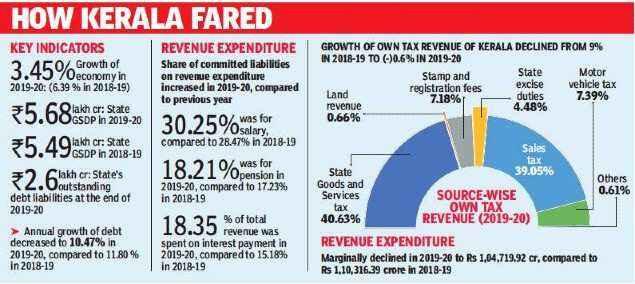
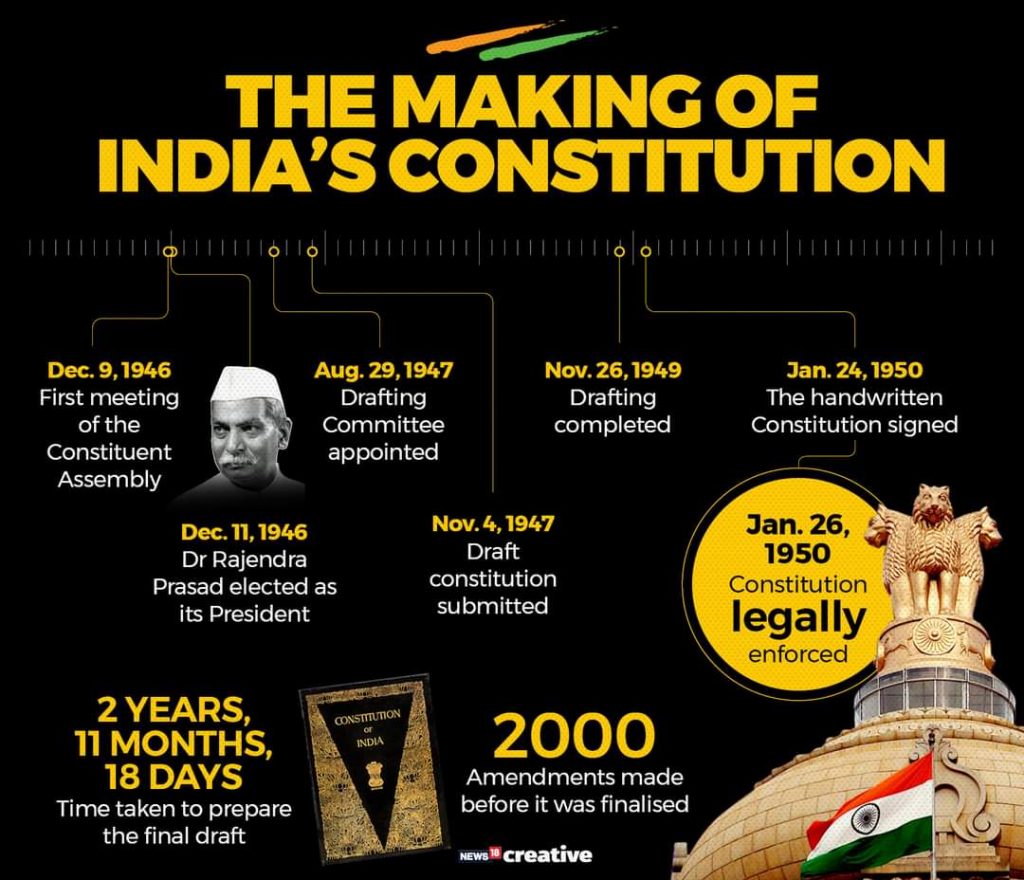
Quote

Fine Points
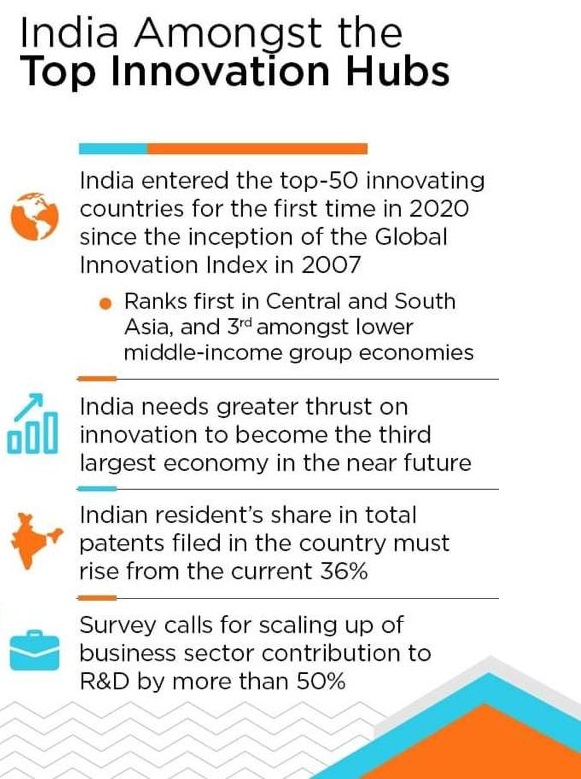
Key Highlights of Economic Survey 2021
The Highlights of the Economic Survey 2020-2021 as presented by the Union Finance Minister, Smt. Nirmala Sitharaman in the Parliament on the 29th of January 2021.
* Govt sees FY22 GDP growth at 11 per cent, and nominal GDP (which accounts for inflation) at 15.4 per cent. This would mark the strongest growth since India liberalised its economy in 1991, and the highest nominal growth since India’s independence in 1947.
* The Economic Survey pegged India’s economic contraction in 2020-21 at 7.7 per cent – the sharpest fall in four decades – mainly due to the nationwide lockdown to curb the Covid-19 pandemic. This matches CSO’s first advance estimates that project the economy to decelerate at 7.7 per cent in 2020-21 and RBI’s projection of 7.5 per cent contraction.
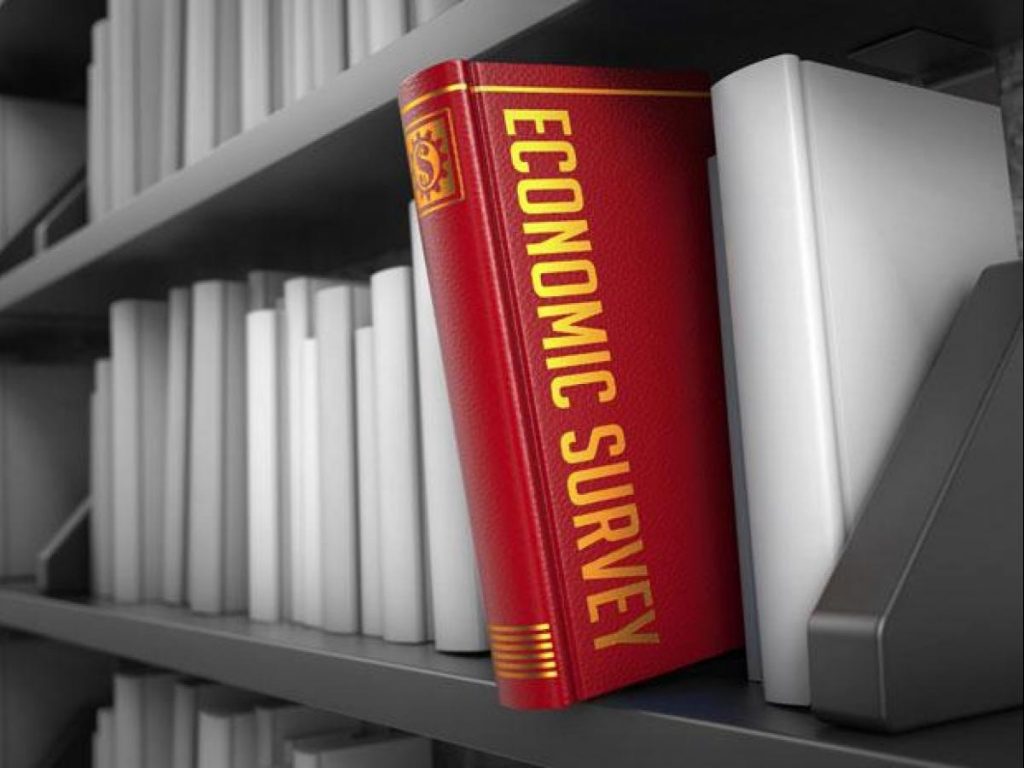
* India’s fiscal deficit is projected to overshoot the initial estimates, 3.5% of GDP, in the financial year ending in March. “In order to sustain the recovery in aggregate demand, the government may have to continue with an expansionary fiscal stance,” the report said, adding the growth recovery would facilitate buoyant revenue collections in the medium term and enable a sustainable fiscal path.
* In the first chapter of the Economic Survey, the CEA writes that India turned the short-term trade-off between lives and livelihoods into a win-win situation in the medium and long term, in turn saving lives and livelihoods. The survey finds a strong correlation between how stringent the lockdown was, and the number of Covid cases and resultant deaths, and furthermore a correlation to a “V-shaped” recovery.
* India’s sovereign credit ratings do not reflect its fundamentals, claims Subramanian, talking about how India is a clear outlier when it comes to its credit ratings cohort. “Never in the history of sovereign credit ratings has the fifth largest economy in the world been rated as the lowest rung of the investment grade (BBB-/Baa3),” .The CEA therefore concludes that India’s fiscal policy should not fear ratings downgrades as a metric of fundamentals, “and should instead reflect Gurudev Rabindranath Thakur’s sentiment of a mind without fear.”
* The relationship between inequality/growth and socio-economic outcomes are very different in India from that of advanced economies. The survey highlights that both economic growth and inequality have similar relationships with socio-economic indicators. Subramanian says growth and inequality converge in terms of their effects on socio-economic indicators in India, and growth has a far greater impact on poverty alleviation than inequality. India must continue to focus on economic growth to lift the poor out of poverty by expanding the overall pie, the CEA writes.
* Covid-19 underlines how a healthcare crisis can become an economic and social crisis. “Healthcare policy must not become beholden to “saliency bias”, where policy overweighs a recent phenomenon,” believes Subramanian. There is a need for higher public spend, healthcare infra must stay agile to be able to respond to pandemics, the work done by the National Health Mission (NHM) must continue, and there should be a sectoral regulator to supervise the healthcare sector, the survey suggests. CEA explains how mitigation of information asymmetry would help lower insurance premiums, and enable the offering of better products.
* “The three agricultural reform legislations are designed and intended primarily for the benefit of small and marginal farmers which constitute around 85 per cent of the total number of farmers and are the biggest sufferer of the regressive APMC regulated market regime. The newly introduced farm laws herald a new era of market freedom which can go a long way in the improvement of farmer welfare in India.”
* Evidence shows that India over-regulates the economy, which results in regulations being ineffective even with relatively good compliance. Root cause of the problem is an approach that attempts to account for every possible outcome. “Both economic theory and evidence show that in an uncertain and complex world, it is not possible to write regulations that account for all possible outcomes,” writes the CEA. An attempt to reduce discretion by having complex regulations results in more non-transparent discretion. Solution is to simplify regulations and invest in greater supervision, which implies willingness to allow some discretion. Discretion needs to be balanced with transparency. Transparency not only reduces purchase prices, but also provides the honest decision maker with a clean process.
* India must significantly ramp up investment in R&D if it is to achieve its aspiration to emerge as the third largest economy in terms of GDP current US$. Mere reliance on “Jugaad innovation” risks missing the crucial opportunity to innovate our way into the future.
* Forbearance has helped borrowers tide over temporary hardships, but when continued for long after economic recovery has resulted in detrimental consequences for banks and the economy. Banks exploited the forbearance window to restructure loans even for unviable entities by “windowdressing” their books. Banks misallocated credit, damaging the quality of investment in the economy. “Forbearance represents emergency medicine that should be discontinued at the first opportunity when the economy exhibits recovery, not a staple diet that gets continued for years,” reads the survey. The survey suggests an Asset Quality Review exercise to be conducted immediately after the forbearance is withdrawn and legal infrastructure to be strengthened for the recovery of loans.
* India entered the top 50 innovating countries for the first time in 2020, ranked 48 in 2020 from 81 in 2015. India ranks first in Central and South Asia, and third amongst lower middle-income group economies. India’s gross domestic expenditure on R&D (GERD) is lowest amongst other largest economies. The government sector contributes a disproportionately large share in total GERD; three times the average of other largest economies. However, the business sector’s contribution to GERD is amongst the lowest. This situation has prevailed despite the tax incentives for innovation having been more liberal than other economies. India’s innovation ranking is much lower than expected for its level of access to equity capital. There is a need for India’s business sector to significantly ramp up investments in R&D. India must focus on improving its performance on institutions and business sophistication innovation inputs.
Kindly click on Economic Survey 2021 to view the full document.
Union Budget 2021-2022
Key Highlights
Links to the Budget Speech & Finance Bill
A quick overview of the Economy
Next FTP may reduce raw material costs to boost sliding exports
India’s upcoming foreign trade policy is likely to ease the norms for import of raw materials and capital goods for exporters in a bid to provide a boost for exports, hit by sluggish global demand.
The Foreign Trade Policy 2020-25 will also offer higher export rewards to products with geographic indication (GI) tag such as Alphonso mango, Banarasi sarees and Moradabadi metal craft with the Make in India scheme being at its core, officials aware of the details said.
The Commerce Department also proposes to lay special emphasis on services and e-commerce in the upcoming policy that is to come into effect on April 1, 2020.
“In certain cases, there are notional duties that increase the export obligation of the exporters. We are rationalising some schemes to encourage them to do more local sourcing,” said an official.
The Department is considering simplifying various export incentive schemes such as Advance Authorisation Scheme, which facilitates duty free import of inputs for export products, Export Promotion Capital Goods (EPCG) that allows exporters to import certain amount of capital goods at zero duty.

For upgrading technology related with exports, and Service Exports from India Scheme (SEIS) to incentivise exports of various services ranging from legal and accounting to engineering and medical, officials said.
The Department is also considering counting total exports of third party as export obligation instead of only proceeds realised from third party by EPCG holders. “The issue will be taken up with the Revenue Department,” an official said.
Similarly, in the advance authorisation scheme, export obligation period could be enhanced from the current 18 months.
The new policy will also detail the contours of WTO-compliant schemes.
Recent Union Cabinet Decisions
Cabinet approves the Investment Proposal of Rs. 5281.94 crore for 850 MW Ratle Hydro Power Project 20.01.2021
Cabinet approves Procurement of 83 Light Combat Aircrafts (LCA) ‘Tejas’ from HAL for IAF 13.01.2021
Cabinet approves MoU between India and UAE for Scientific and Technical Cooperation 13.01.2021
Forthcoming Event
CEO FORUM 2021
Union Budget 2021 - Will it help to leave Covid behind?
05.02.2021 | 08.00hrs. - 10.00hrs. | Hotel Taj Gateway, Ernakulam

The February Meeting of the CEO FORUM will be held on Friday, the 5th of February, 2021 at the Taj Gateway Hotel, Marine Drive, Ernakulam from 8.00 a.m. to 10.00 a.m. The meeting will be followed by a Networking Breakfast.
Mr. Kishor Rungta, Chairman and Managing Director of FACT, Udyogamandal has kindly agreed to be the Guest Speaker for the upcoming meeting. He will speak on “The Union Budget 2021 – Will it help to leave Covid behind?”
Rest assured that all safety measures will be adhered to in the conduct of the meeting. Wearing of Masks and maintaining Social Distance is mandatory.
While there is No Registration Fee payable for those who have subscribed to the Breakfast Meeting series, we are constrained to charge a nominal fee of ₹600 (inclusive of GST) for the other participants.
We look forward to your participation and thank you in advance for the same. Kindly do register for the event.
CCCI - Ease of Doing Business Information Survey
The Kerala Government has constituted a Committee of Secretaries vide Order dated 7th October 2020 as Phase 1 of exercising minimum regulatory compliance on businesses. The Cochin Chamber of Commerce & Industry wishes to contribute quality policy inputs to the Government to improve Ease of Doing Business in the State.
Questionnaire on Business Information Survey (click on the link given to view the same)
We request you to send your valuable inputs by filling the above Questionnaire and kindly co-operate with us.
Our new Member
CML Biotech (P) Ltd
CML Biotech (P) Ltd took its origins in 2000, when our Founder Director, Paul Jacob initiated the project with Rapid Test Cards and Reagents for various medical diagnostics. Later the company moved into Laboratory and medical diagnostic consumables.
Today CML is one among the leading brands in Diagnostics and Laboratory consumables and is one among the top 10 players in Blood Collection Tubes and the business is spread across 60+ countries. CML is based at INKEL Business Park, Angamaly and has 2 other units at Karukutty and Koratty, with an employee strength of 400+. Astra Bioscience Ltd is also part of this group. Our strength is our committed and skilled staff, employees and partnerships with various industry related association and organizations.
CML is partnering with CSIR and other research bodies for developing and commercializing various related technologies. Currently we are members of CII, Pharmexcil, KMA and Plexconcil.
We have bagged many awards in the recent past and to name a few: –
- Best Manufacturing Company in MSME Segment from Council of State Industrial Development and Investment Corporation of India (COSIDICI).
- Best Entrepreneur Award in KFC Conclave.
- 1st Runner-up in Import/Export substitution, KFC Conclave in 2018-19.
In CML, we look forward to offer Quality Medical Consumables at affordable prices and being a reliable manufacturer of the same across the world.
Recent Event
CEO FORUM 2021
Resurgence of Economic Activities - Is it Real and Sustainable?
08.01.2021 | 08.00hrs. - 10.00hrs. | Hotel Taj Gateway, Ernakulam
The Cochin Chamber’s CEO FORUM Breakfast Meeting series, meant for the Business Leaders in Cochin was recommenced on Friday, the 8th of January 2021 after a 10-month break brought about by the restrictions imposed on account of the Corona virus pandemic.
Mr. Paul Antony IAS (Retd.), the Former Chief Secretary of the Government of Kerala was the Speaker at the Session. He spoke on the “Resurgence of Economic Activities – Is it real and sustainable.”
Mr. K. Harikumar, President of the Chamber delivered the Welcome Address and introduced the Speaker. Addressing the meeting the President spoke about the various activities of the Chamber and the representations that the Chamber had sent to the Union Government and the Government of Kerala on the expectations from the Industry in the upcoming Union Budget and the State Budget respectively. He also said that the Chamber had sought the expansion of the Cochin Corporation limits to allow for a more focused approach towards the development of the City.
The President then invited Mr. Joshy Varkey, Director of CML Biotech Ltd. a new Member of the Chamber to address the Forum and speak about the activities of his Organisation.
Mr. Varkey thanked the President for the opportunity and briefly outlined the activities and projects of CML Biotech Ltd., to the participants.
Addressing the Forum Mr. Paul Antony thanked the Chamber for the opportunity given to him to address the Chamber’s CEO Forum. He appreciated the Government for the efforts made to ease the Doing of Business despite the various ongoing restrictions that businesses face because of the pandemic and the resulting lockdown. He said that while the government has been trying to do whatever best is possible, the current positives such as the record Foreign Exchange Reserves of US$ 581 billion the low International Crude Oil prices etc. work to our benefit and need to be taken advantage of. With lower interest rates on loans for businesses being made available India is now being projected as the preferred investment destination of the future. Mr. Antony said that India should stop at nothing to attract investors to the country especially at a time when giant industry is looking to relocate post the pandemic for various reasons. He said that we need to improve the perception that the rest of the world has about India as a preferred investment destination.
Economic activities are on the path of resurgence, but the pace needs to be quickened. He called on the Government to announce incentive measures on a much larger scale, as is being done in other countries, to turn the economy around faster. He also called for relevant and accurate economic data and statistics to be put out in the public domain to substantiate and validate the happenings on the ground and to help investors plan for future investments in India.
Mr. Antony lauded the tremendous progress made by the Agriculture sector, Information Technology, and the Pharma Sector during these testing times. He said that the biggest outcome of the pandemic is that the ‘geography of business’ has changed for ever and today digital technologies and e-commerce platforms have taken precedence in the way we conduct our businesses and our lives.
Speaking about Kerala, Mr. Paul Antony expressed that the challenges being faced by State are rising unemployment and the tremendous blow that the Tourism Sector, which accounts for 10% of the State’s GDP and employs 23% of the people. He also stated that the repatriation of the non-resident Indians, mostly from the Gulf, is a huge challenge that the Government will need to address. Employment generation resulting in improved purchasing power which will fuel consumption is the way forward.
Mr. Paul Antony appreciated the various humane initiatives taken by the Government of Kerala in alleviating the distress caused by the pandemic and the lockdown during 2020. He expressed that positive initiatives only would make economic revival sustainable in the long run.
Concluding the meeting Mr P M Veeramani the Vice President said that while the GST is a reality today many more changes need to be made in the law in order to make GST business friendly. The Vice President also highlighted the fact that the Chamber has taken up the issues like the need for a Retail Policy for Kerala, the need to include contributions to the CMDRF as CSR contributions and also for the need to expand the limits of the Cochin Corporation to enable a more focussed approach for its development with both the Central and State Governments.
Chamber in the News....
Expansion of Kochi Corporation
Finance Minister with Kochi
IT Exemption for Co-Operative Banks
Plantation Policy Encompasses
Article
IMPLICATION OF SECTION 91 OF THE PERSONAL DATA PROTECTION BILL ON INTELLECTUAL PROPERTY RIGHTS OF BUSINESS HOUSES
Prashanth Shivadass – Founder &
Pravallika V S – Associate,
Shivadass and Shivadass (Law Chambers), Bangalore
Introduction
The Personal Data Protection Bill, 2019 (‘PDP Bill’), has garnered a lot of attention over the last two years. With the recent developments including the recently updated Non-Personal Data Governance Report and riveting discussion on an online-social media chat application’s new privacy policy. So much so, the application recently carried out a one-page newspaper advertisement, clarifying their new privacy policy.
A number of both advocates and critics have argued for and against the current schematic of the PDP Bill, currently pending before the Parliament. A lot more have argued on the nature of … to be made out in this Bill. One such critique is the implication of the proposed Section 91 of the PDP Bill on the IPRs of Business Houses. This Article seeks to address the critique and form out a potential recommendation that could be considered during the ensuing discussions on the Bill this Budget session.
Overreach of the Provisions of the Bill
The preamble of the revised PDP Bill, 2019, reads: to provide for protection of the privacy of individuals relating to their personal data, specify the flow and usage of personal data, create a relationship of trust between persons and entities processing the personal data, protect the rights of individuals whose personal data are processed, to create a framework for organisational and technical measures in processing of data, laying down norms for social media intermediary, cross-border transfer, accountability of entities processing personal data, remedies for unauthorised and harmful processing, and to establish a Data Protection Authority of India for the said purposes and for matters connected therewith or incidental thereto. However, provisions relating to, ‘laying down norms for social media intermediary’ and ‘ensuring empowerment, progress and innovation through digital governance’ are perhaps beyond the scope (object and reasons) of the Bill.
Primarily, Section 91 of the PDP Bill, authorizes the Central Government to direct any Data Fiduciary, to provide ‘non-personal data’ and ‘anonymized personal data’ to the Government for certain purposes including improving delivery of services and formulation of evidence-based policies.
For clarity, anonymisation has been defined under Recital 26 of the GDPR as “data rendered anonymous in such a way that the data subject is not or no longer identifiable.” The basis of this definition is essentially to strip the data of any identifiable information in a manner that makes it impossible to get insights on an individual even by the entity that carries out the anonymisation.
By virtue of the above provision, the government now has access to non-personal data and anonymised personal data of service providers, for select regulatory objectives.
The provision conceptually raises concerns about the Bill. The provision essentially gives the Government forced access which can infringe intellectual property rights of service providers holding data sets. BN Srikrishna also raised concerns about the same, and stated that, “through this clause, the government can access all business data, including data on intellectual property, business strategy and mergers & acquisitions”.
Businesses may now be compelled to part with intellectual property, or other proprietary or business critical/sensitive information which has been researched, collected, and organized after spending considerable amounts of time and capital. Further, the lack of any form of compensation or restrictions on disclosures to third parties, including state-run commercial organizations and media & broadcasters, make such sharing of non-personal data or anonymized personal makes this a distasteful sharing of data for companies.
Conflict with Article 39 of the TRIPS Agreement
Given India’s strict adherences to TRIPS, the above provisions may potentially be in conflict with Article 39 of the TRIPS agreement. Article 39 of the TRIPS Agreement impose an obligation on the member states to protect undisclosed information of natural as well as legal persons. Paragraph 1 of Article 39 imposes an obligation on the member states; paragraph 2 provides a right of protection of undisclosed information against disclosure to natural and legal persons (read with Article 39.1) and paragraph 3 deals with data submitted to government or their agencies specifically.
Additionally, Article 39(3) of the TRIPS Agreement, provides for ‘trade secret protection’. ‘Trade secret protection’ means protection of data which is submitted to the concerned regulatory authority for registration of unauthorized use or disclosure but can rely upon this information to grant marketing approval to a subsequent application for similar products without disclosing the confidential information, prima facie, the Section 91 of the PDP Bill, is clearly against protection given under Article 39 of the TRIPS agreement which India is a signatory to.
CASE STUDIES
We have ventured to analyse some cases from the past where similar provisions have been dealt with by the Courts. The aim is to highlight the flaws in those earlier regime and to compare the same with the proposed regime.
Coca Cola in India
Coca Cola had a policy of licensing bottling plants overseas, rather than direct investment. The said strategy was applied in India as well. Coca-Cola was incorporated as a “branch” of a consumer goods company. Coca-Cola being quite a prominent brand in India, with the introduction of Foreign Exchange Regulation Act, 1973 and the Indian Patent Act of 1970, the company ran into some problems. FERA mandated that Coca-Cola convert its branch into an Indian company which would divest 60 % of its stake to Indian investors. The Company was given two years to achieve this result. Further, the Patent Act also imposed another condition i.e. to share its drink’s secret formula, nicknamed “7X.” However, Coca-Cola refused to do so, and exited India in the year 1977. Coca-Cola finally returned to India in 1993 after the economic reforms of 1991.
Eastern Book Company Case
In the case of Eastern Book Company & Ors vs D.B. Modak & Anr Eastern Bok Company (appellants) were involved in printing and publishing of law books including “Supreme Court Cases” (SCC). Further, the appellants alleged the Respondents of lifting sequencing, selection and arrangement of the cases, text of copy-edited Judgments as published in SCC, style and formatting, paragraph and footnote numbers, cross-references, etc. for incorporation in their CD product. The main contention of the appellants was that inputs placed in the raw text constitutes ‘original literary work’ and thus Respondents liable for causing infringement of copyright. The Division Bench in appeal did not agree with the Appellants contention. Therefore, an appeal was preferred to the Supreme Court. It was held that, collection of material and addition of inputs in the raw text does not satisfy the minimum requirement of creativity, as skill and Judgment required to produce the work trivial and to establish copyright, the creativity standard applied is not that something must be novel or non-obvious, but some amount of creativity in the work to claim a copyright is required. To claim copyright, there must be some substantive variation and not just a trivial variation, Therefore, the inputs put by the appellants in the copy-edited Judgments do not satisfy the standard of creativity required for the copyright, however inputs and task of paragraph numbering and internal referencing requires skill and Judgment in great measure having some amount of creativity. Further putting an input in form of different Judges’ opinion shown to have been dissenting or partly dissenting or concurring, etc. requires reading and understanding the questions involved, therefore, Appellants have a copyright, which nobody can utilize.
The Supreme Court reiterated that it would not be regarded as subject to copyright by the mere application of work in the processing of pre-existing data. In order, to seek database rights under the Copyright Act, the presence of any “creativity” in the compilation is an absolute necessity. Given the above cleaning, converting, and organizing data into data sets, businesses add value to raw data, from which they gain insights are all creative activities. Further, using technological inputs and technical expertise, raw data processing is performed. Therefore, the input of proprietary algorithms is necessary, except in cases of anonymized data, which is a subset of non-personal data for the purposes of this provision. The necessity of “creativity” in data collection can be sufficiently fulfilled by these inputs. Article 91 of the PDP Bill, therefore, encroaches the protection given to the trade secrets under the copyright Act.
Burlington Home Shopping Pvt. Ltd. v. Rajnish Chibber & Anr.
The Delhi High Court observed that, in theory, copyright and trade secret law protect different elements of data compilation. While copyright protection extends to the particular expressive arrangement of data, trade secret protection extends to the underlying data. The judgement refers to a portion of during the course of his judgement referred Paul Goldstein “ Copyrights Principles Law and Practices”, an extract of which is as under:
“Trade Secret law protects a wide array of business data; In theory, copyright and trade secret law protect different elements of compiled business data, with copyright protecting the expression in these compilations and trade secret law protecting the underlying data. In fact, copyright and trade secret protection for compilation of business data frequency converge. Copyright protection for business directories often extends to the underlying data, and trade secret protection may extend to particular expressive arrangements of data.”
Therefore, one may consider the following:
- The provision is beyond the scope of the proposed law to control non-personal data flows.
- All relevant interests have not been properly weighed or balanced as the provision because it gives the government a general power to seek any form of non-personal data. This could affect the data fiduciary’s property rights and competition in the digital environment as also individual privacy.
- There are high chances that data could be reidentified to the source thereby violating the right to privacy to persons.
- The provision by itself is vague, ambiguous, and open to arbitrary usage. To seek data on the grounds of “evidence-based policymaking” leads to misinformation and lack of creativity.
- Therefore, to ensure proportionality and to be subject to sufficient procedural protections, the provision does not pass the Puttaswamy tests. Section 91 thus leaves companies with less motivation to innovate as they part ways with non-personal data as and when requested by the government. Further, the National Association of Software and Service Companies, NASSCOM, while expressing concern over Section 91 of the Bill, stated that possible apprehension regarding compulsory licensing or acquisition of data could restrain innovation.
THE RESERVE BANK OF INDIA
DISCUSSION PAPER ON REVISED REGULATORY FRAMEWORK FOR NBFCS- A SCALE-BASED APPROACH
This Discussion Paper from the RBI is an attempt to reorient the sector by recognising the need to review the regulatory framework in line with changing risk profile of NBFCs.
1) Rapid developments in the last few years have led to significant increase in size and interconnectedness of the NBFC sector.
2) NBFCs size was around 12% of the balance sheet size of banks in 2010. They are now more than a quarter of the size of banks.
3) Failure of an extremely large NBFC can precipitate systemic risks demanding a serious regulatory framework for NBFCs.
4) NBFC NPA classification norm of 180 days to be harmonized to 90 days.
5) The minimum capital entry point norms will be increased from ₹2 crore to ₹20 crore
6) As on March 31, 2020 there are seven NBFCs (including HFCs) each with asset size exceeding ₹ 1 lakh crore and above. One adverse incident in one of the large regulated entities having significant interconnectedness, impacted sentiments and threatened financial stability.
7) RBI believes that a calibrated and graded regulatory framework proportionate to the systemic significance of NBFCs may be best suited for the system to preserve financial stability and reduce systemic risks.
8) The proposed Regulatory framework of NBFCs shall be based on a four-layered structure– Base Layer (NBFC-BL), Middle Layer (NBFC-ML), Upper Layer (NBFC-UL) and Top Layer.
Proposed regulatory framework for these layers is enumerated below.
A) NBFC-Base Layer (NBFC-BL): The NBFCs with an asset size of up to Rs 1,000 crore will be considered under this layer. The largest share i.e. 97.7 % of NBFCs in the country will fall in this category. These non-deposit entities will not have strict regulation in place compared to the deposit taking NBFCs.
B) Middle Layer (NBFC-ML): This layer includes all deposit taking NBFCs and all non-deposit taking NBFCs currently classified currently as ‘systemically important’. This layer set to witness tighter corporate governance norms.
C) NBFC-Upper Layer (NBFC-UL): This layer will comprise of the largest 25 to 30 NBFCs identified as systemically significant. In addition to the regulations applicable to NBFC-ML, a set of additional regulations will apply to NBFC-UL This is the category where regulation will move towards what is followed in the case of banks. Scheduled commercial banks like minimum requirements for Common Equity Tier 1 (CET 1) capital. RBI proposed that CET 1 may be prescribed at 9% within the Tier I capital. NBFCs in this layer may fix Sensitive Sector Exposures (SSE) ceilings based on internal board approved policy. Such NBFCs shall be subject to mandatory listing requirements.
D) Top Layer: This layer will lie empty currently and will be filled with the upper layer NBFCs where the RBI anticipates extreme risks.
9) RBI will prescribe the roles and responsibilities of the Risk Management Committee to be constituted by the NBFCs.
10) The NBFC’s board shall have an adequate mix of experience and professional qualifications amongst the members of the board. Minimum one director shall have experience in retail lending in a bank or NBFC.
11) Initial Public Offer (IPO) financing by an individual shall be subject to a ceiling of₹1 crore per individual for any NBFC similar to the limit of₹ 10 lakh for banks for IPO financing.
12) Additional disclosure requirements like types of exposure, related party transactions, customer complaints etc. proposed.
Fine Points
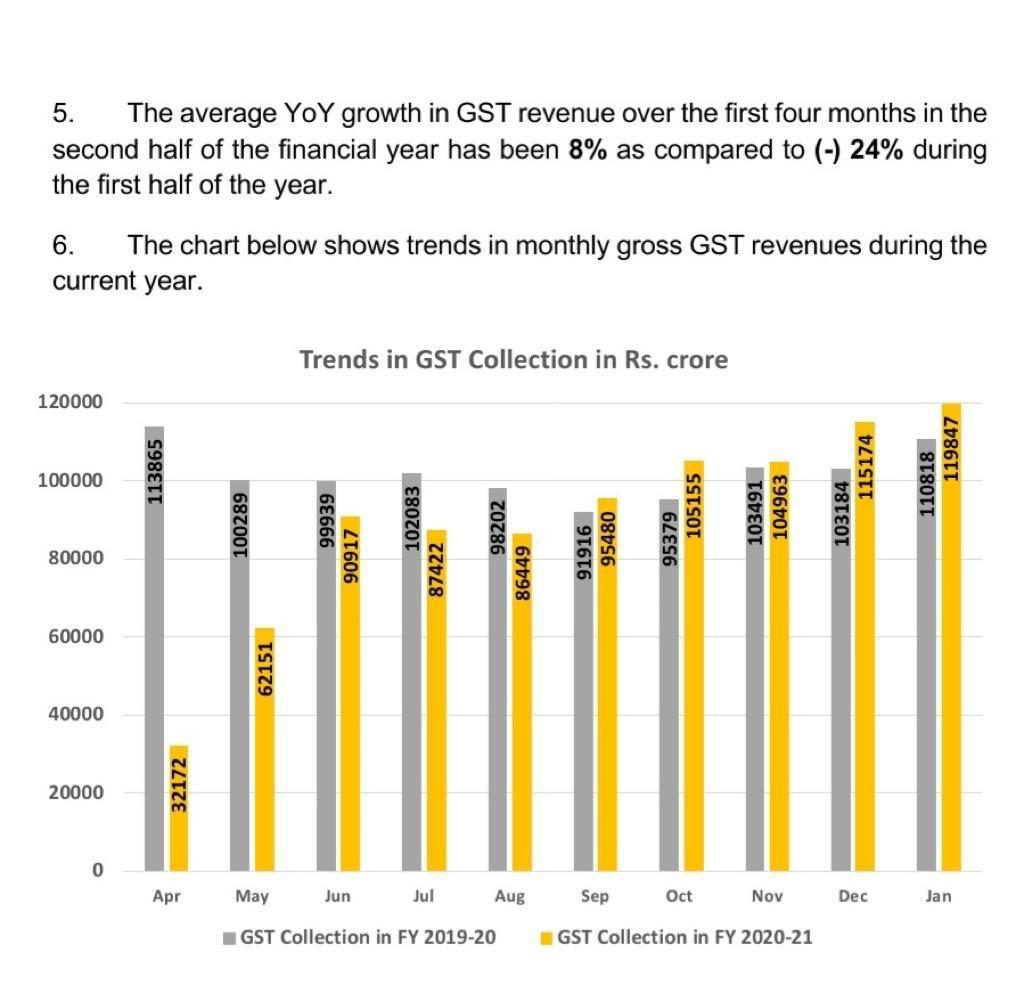
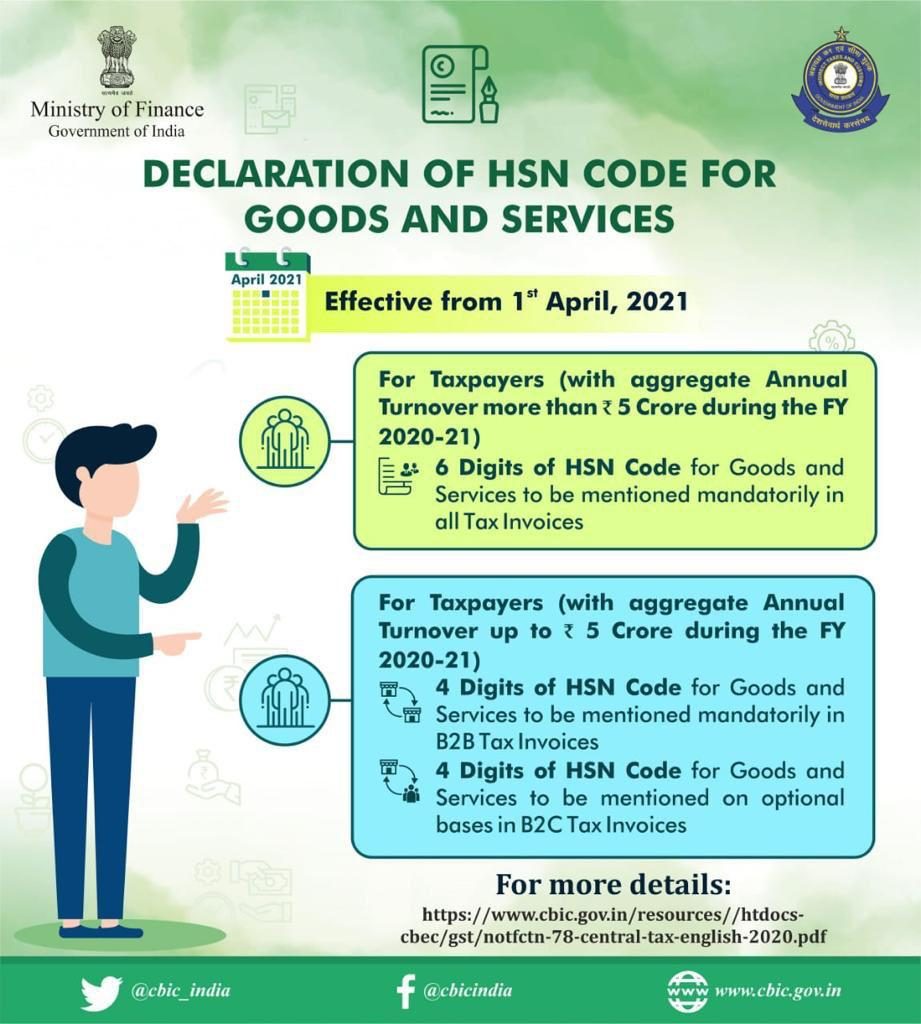

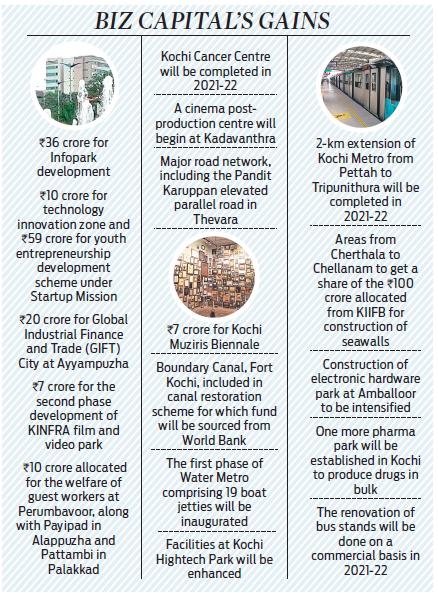
From the Research Wing.....
The Cochin Chamber submitted a Pre-Budget Memorandum to Kerala’s Finance Minister. A number of recommendations made by the Chamber were featured in the State Budget when announced.
The Chamber was invited for the Manifesto discussions convened by UDF. We have made submissions to the Committee for consideration.
The Chamber is preparing a ‘Vision Document’ that will be used to engage the newly elected Government for reforms in Kerala. Members are requested to submit their inputs to [email protected] before 30th January 2021.
Policy Developments Corner
The Kerala Budget 2021-22 was tabled in the Legislative Assembly on 15th January 2021. The Budget documents are available at http://www.finance.kerala.gov.in/bdgtDcs.jsp
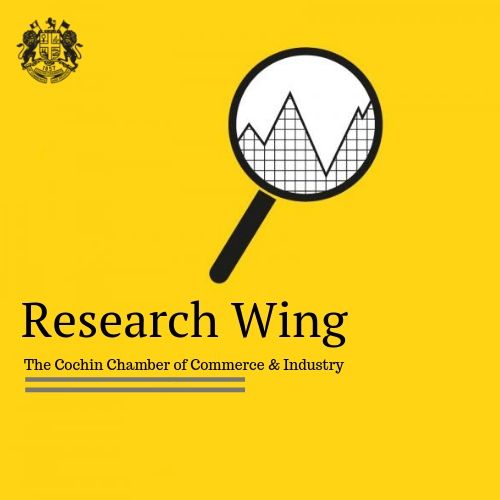
Central Board of Direct Taxes Notifies Faceless Penalty Scheme, 2021. The Scheme is available at https://www.incometaxindia.gov.in/communications/notification/notification_no_2_2021.pdf
The Ministry of Labour has invited comments on the Draft Model Standing Orders 2020. Deadline : 30th January Contact : [email protected]
The Ministry of Corporate Affairs has invited comments on the Report of the Company Law Committee on Decriminalization of offences under LLP Act. Deadline: 2nd February (Notice date : 18th January) . Contact id: [email protected]
Congratulations to the Cochin Port

Rejection of applications under Vivaad Se Viswas Scheme
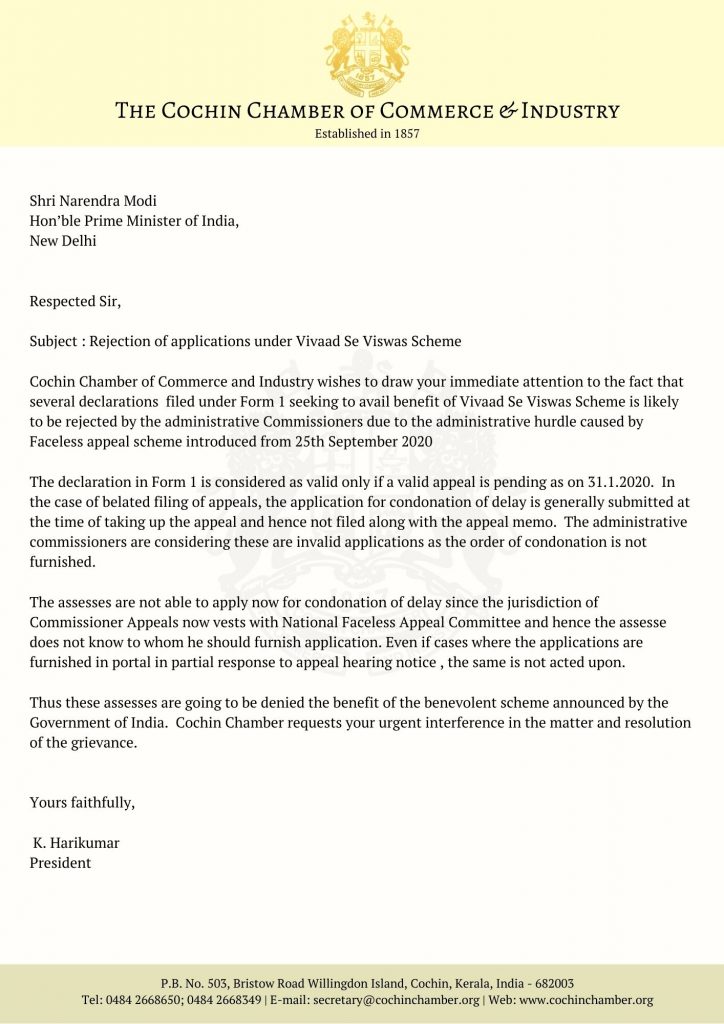
Chamber's Repository for all the Notifications and Guidelines pertaining to the COVID-19 outbreak, the resulting lockdown & unlock S.O.P.

Exclusive EXIM Statistics
Statistical Reports on Exports and Imports through the Cochin Port.
The Cochin Chamber of Commerce and Industry publishes statistical reports on Exports and Imports through the Cochin Port on a monthly basis followed by a Consolidated Annual Report at the end of each calendar year. The reports on exports are classified as commodity wise and pertain to the following commodities:
- Coffee
- Tea
- Spices
- Cashews
- Cotton Goods
- Seafood and
- Coir and coir products
Details on all other commodities that do not fall under the above-mentioned heads are carried as the ‘Miscellaneous Report’. Customized reports will also be available according to customers requirement.
We have several members in the export/import fraternity subscribing to these reports on a monthly basis and from the feedback received they are immensely benefited by the same.
We are confident that our reports will be of help to your Company in staying one step ahead of your competitors in business. A sample of the report is attached herewith for your reference. Also attached is the ‘Subscription Form’ to enable you to subscribe to the report should you want to do so.
Should you have any queries please feel free to contact Mr. T.M. Padbhanabhan (8921695456).
For more details, visit Export-Import Statistics

